This post is also available in: ![]() English
English ![]() Français (French)
Français (French) ![]() Español (Spanish)
Español (Spanish)
Introduction
The origin center of the mango is located in Southeast Asia. Today, the mango is cultivated in tropical and subtropical regions as Brazil, Mexico, Australia…
The mango tree (Mangifera Indica L.) cultivation in the world is expanding. Mangifera indica have several varieties (>1000 cultivar). One of the most popular mango variety in the South-East Asia region is Harumanis from Malaysia which is due to its aroma, texture, and sweetness.
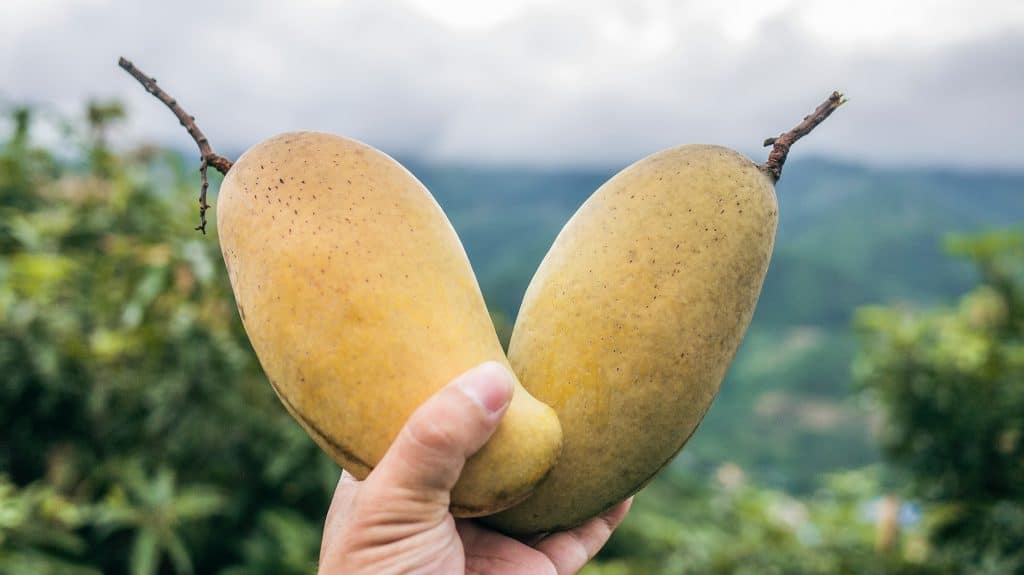
The control and preservation of mango quality represent an important challenge for the further development of this production. Open-field cultivation has some limits, plants are highly exposed to pests and diseases. Therefore, a lot of growers are using chemicals which create pollution and fruit contamination. Moreover, the massive use of fertilizer and leaching of these also cause problems.
Note: It this article the Harumanis mango conditions will be shown as an example.
Climate and soil requirement
The climate condition in the Northern part of Malaysia / Southern part of Thailand is a major factor why mango variety such as Harumanis or Dragon Irwan can be cultivated in this part of the world.
Indeed, Harumanis mango tree needs a significantly dry period to initiate the flowering. Yields are better when temperatures are as low as possible during at least two weeks in December or January during initiation phase.
The flowers start to bloom from January to February and the fruit-bearing period is from March to April according to Azizan and al,. 2019. At flowering stage, the temperatures needs to be high to maintain flower bloom on tree. The harvesting period is from May to June every year.

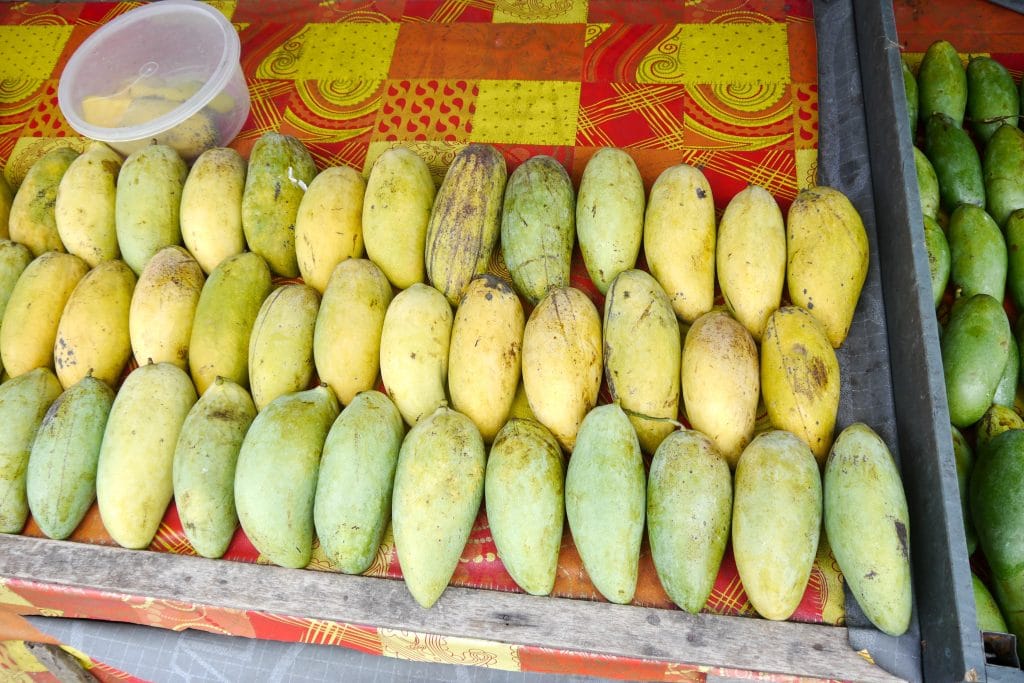
In the soil, the of Nitrogen (N) is important and crucial for crop growth. Nitrogen stimulates vegetative growth and ensures high rates of flower formation, fruit-set, and assimilation inflow into developing fruits. Lack of nitrogen will cause decreases in plant productivity and fruit quality while excessive nitrate contribute to contamination of water sources through volatilization, denitrification, and leaching. Phosphorus (P) is the second most essential nutrient responsible for plant growth. Other than nitrogen and phosphorus, Potassium (K) plays as an important nutrient for photosynthesis, respiration, and growth in the expansion and development of cells In the plant.
Recent studies (Azizan and al,. 2019) have shown that the soil in the Northern part of Malaysia is poor in N (0,09%), rich in P (648 ppm) and moderate in K concentration (0,685 cmol/kg).
Mango cultivation under greenhouse : concept introduction
In order to produce sustainable mango with high quality and yield, a greenhouse cultivation concept can be implemented. Drought is used to trigger good flowering (Rohani and al,. 2012) and once flowers are there heavy rain an damage flowers already produced and decrease the yield. The greenhouse will isolate the mango trees from the outside rainfall and protect them.
Low-tech technology greenhouse will be selected when the outside conditions are close to the trees requirements. An efficient ventilation is an important factor to control the relative humidity inside the greenhouse decreasing the risk of fungi attacks for exemple.
The main ideas of this concept are :
- Small greenhouse block units (<30m witdh) – better ventilation and sanitation
- High greenhouse (>4m under gutter) with a proper design to maximise to maximize the entrance of light inside
- Promote passive ventilation with vents on the roof and large mesh netting on the sides and gables
- Use a proper diffusing plastic type – boost photosynthesis
- Use a proper insect-proof net against leaf cutter and fruit flies for example
- White paint on covering material or shading screens can be used to control the inside temperature
- Circulation fans can be added to increase te airflow inside the growing area to control the relative humidity
- Physical protection (fence, electric barrier or semi-rigid cover: PVC, polycarbonate) against fructivorous predators
Sources:
Data Mining on Climate Factors for Harumanis Mango yield prediction”
Reproductive physiology of Mango (TL Davenport, 2007)
Soil NPK Variability Mapping for Harumanis Mango Grown in Greenhouse at Perlis, Malaysia
http://www.padil.gov.au/pests-and-diseases/pest/main/136201
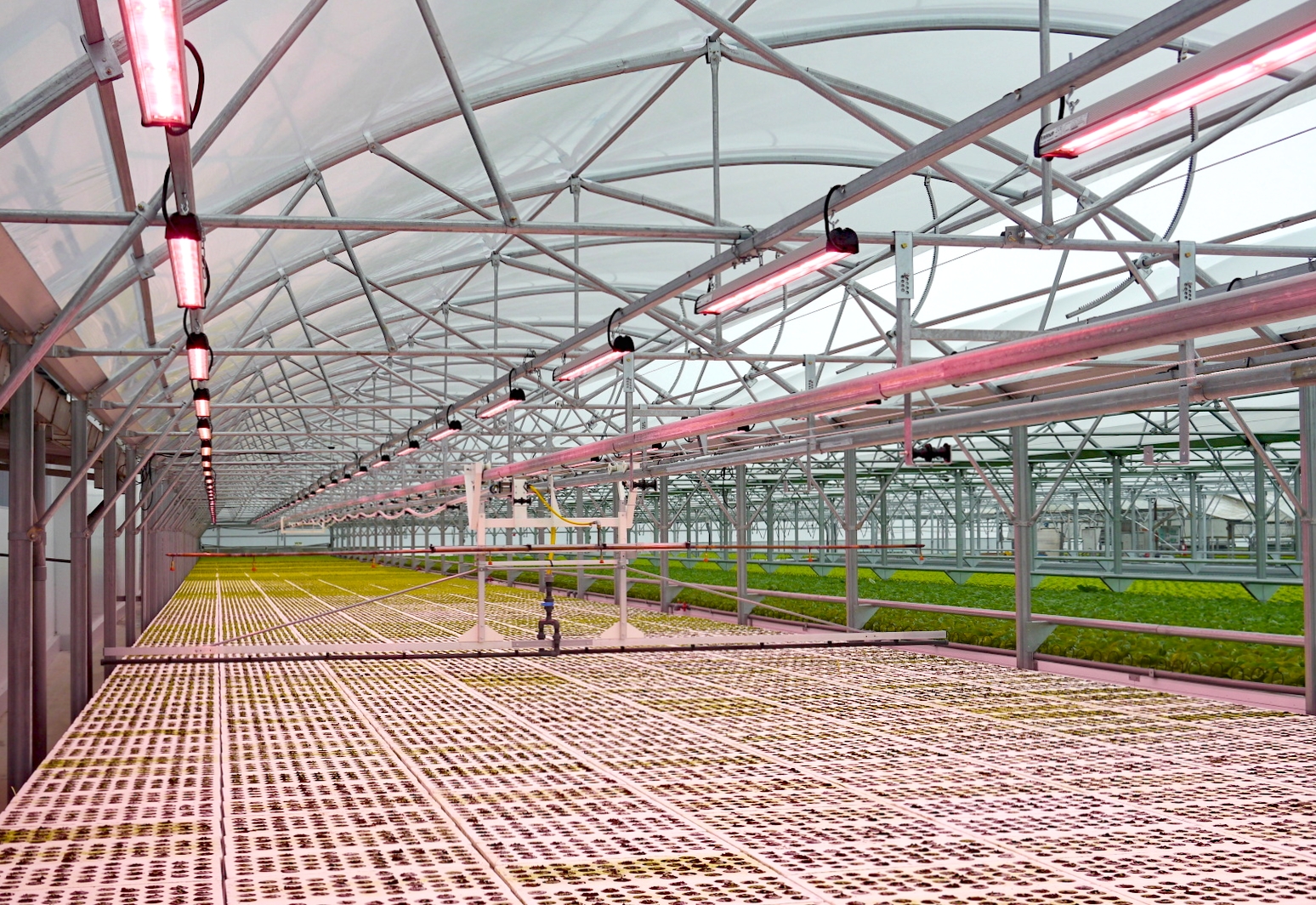


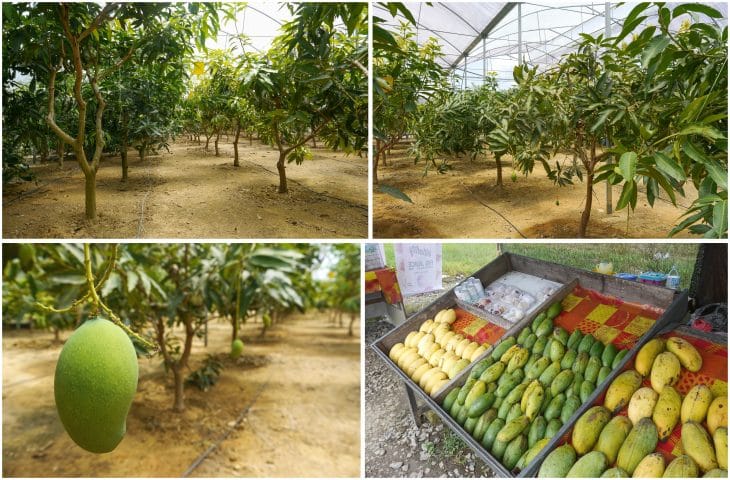
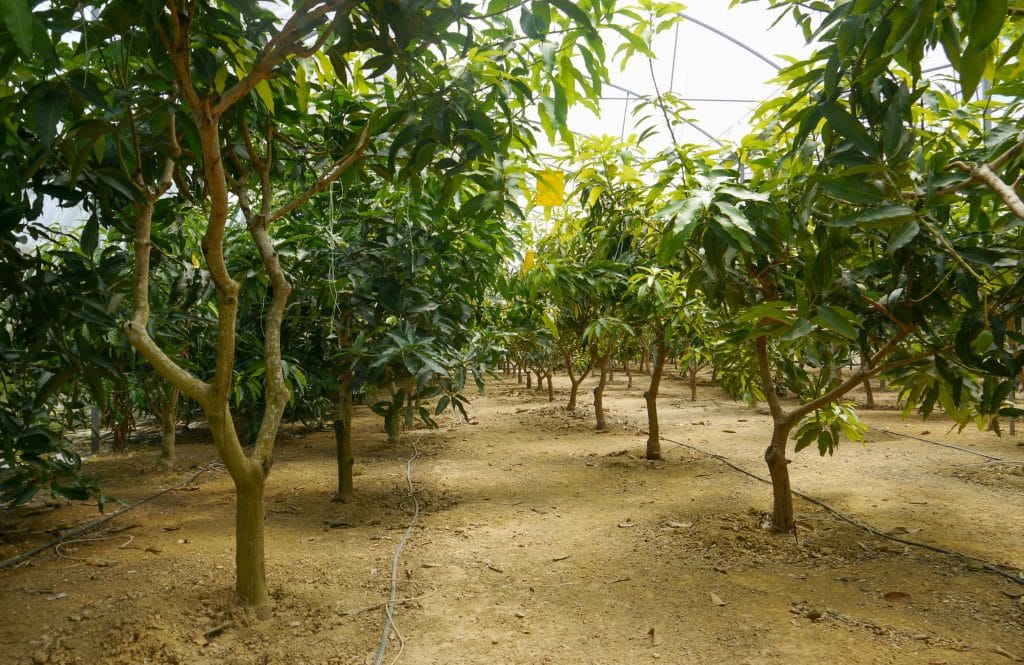
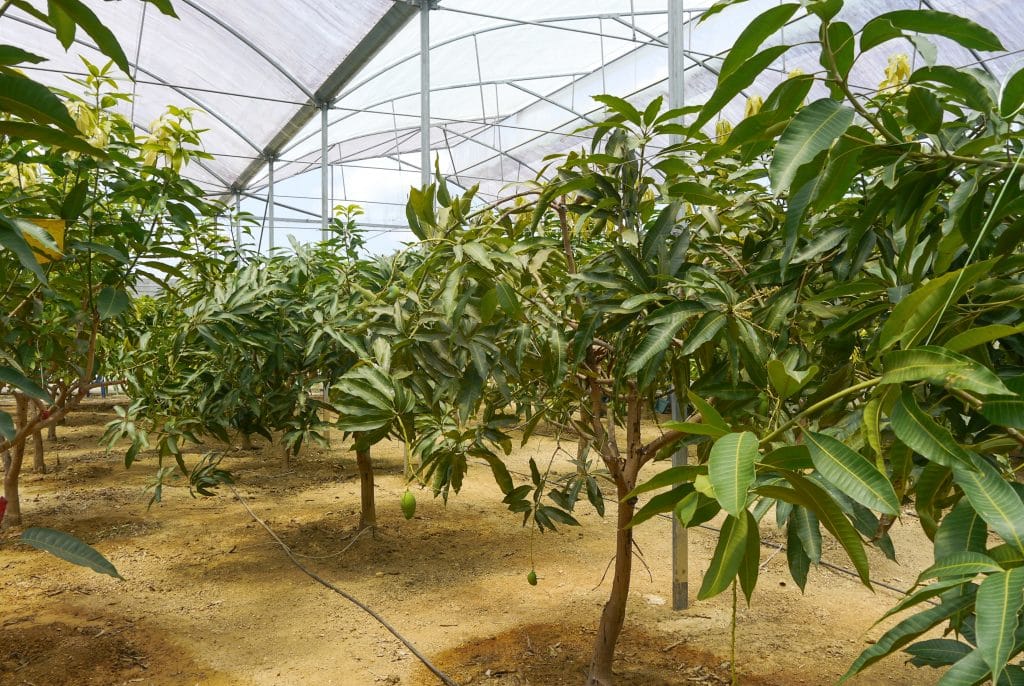
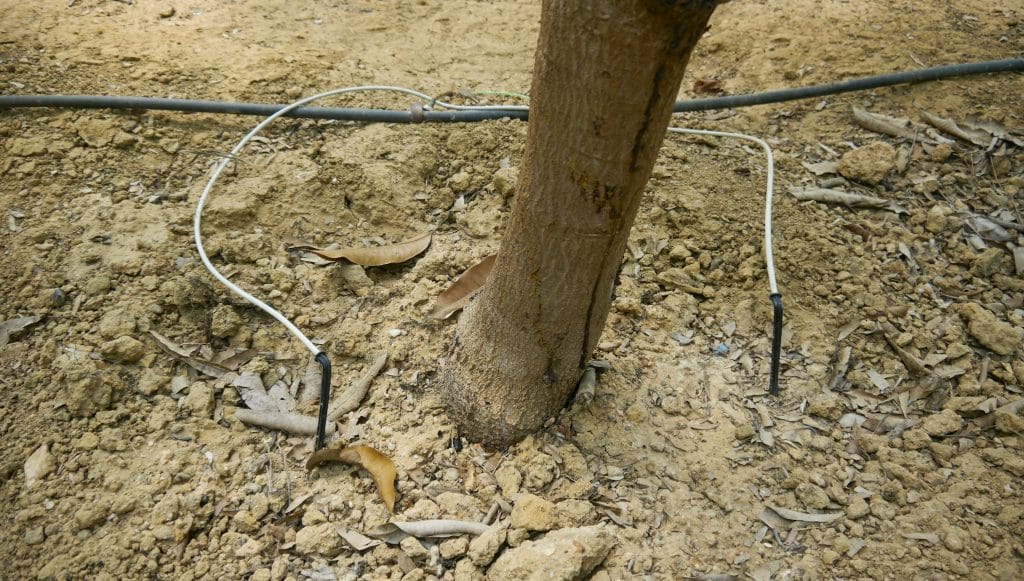
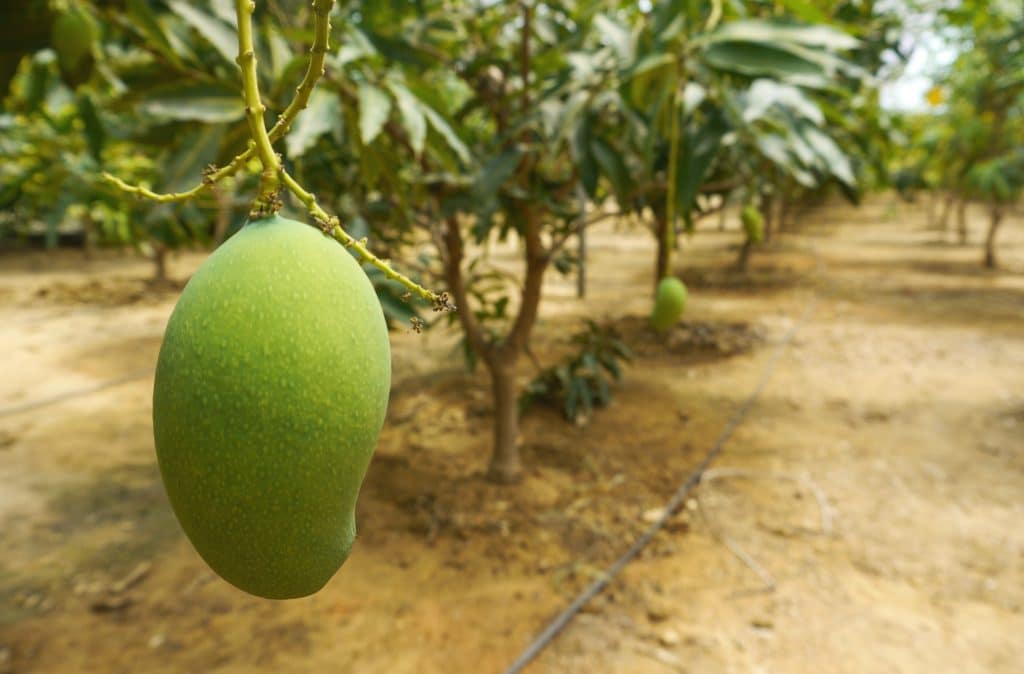

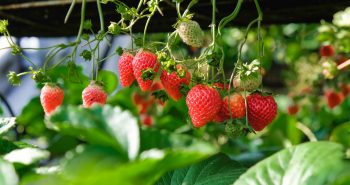
Is it possible to have a green house installed on mature productive trees and what are the effects
Hi Eric,
Yes it is possible. However the greenhouse dimensions have to be adapted to the tree height. The article above was an example of dwarf mango trees cultivation (3,5m height maximum) in Malaysia for information.
In fact, cultivating mango trees in a greenhouse will allow you to have a better control of the climate (growing area) and ferti-irrigation system managing the irrigation frequency for example…
Corenthin
Thaks for all those insights, do you think it is possible to grow greenhouse mangoes in Paris -France- region? The temperature can go down to -5° in winter…but in a greenhouse, the temperature can be controlled no? Do you see other roadblocks ?
Hi El Hadi,
It is possible to control all climate parameters in a high tech greenhouses such as the temperature, humidity, light… However, a big factor to consider is the operational cost because it will impact significantly the profitability of your business.
Indeed, you will have to heat the greenhouse during most part of the year if you want to grow mango in France… this has a very high cost ! The other limitation will be the initial investment to buy the greenhouse and the equipment if you plan to produce on a larger scale (> 1000 m2).
Corenthin
Sir,
what is the cost effectiveness of growing mango in greenhouses? what is the cost of green house and what are the features required to control environment in green house? what will be the maintenance cost?
Dear Mahesh,
It depends the location of the project but the advantages of using a greenhouse to grow mango in some regions are to protect the fruit from the pests and diseases reducing or eliminating use of pesticides… also to isolate the trees of the outside environment having a better control of the ferti-irrigation in order to simulate the fructification (no of fruits and quality).
Costs depend of the greenhouse type (design, width, height…) level of equipment (low, mid-tech…), mango variety… There are a lot of factors to be analyzed by specialists !
Corenthin
Hello is it possible to grow mango under solar greenhouses? They have moving shaded area depending on the angle that the sun is.
Hi Noel,
It depends the mango variety, however, the trees in most cases will need a full light exposition. It means that it can have a negative impact on the tree development (photosynthesis) and appearance of the fruits.
Thank you,
Corenthin
[…] Mango trees cultivation under greenhouses conditionsPersonal photos – credit Corenthin Chassouant […]
Is it the soil heat or the relative that is important? If the soil heat is most important, could it be possible ti use water heated pipes in the soil in order to save cost. Warm water can be taken from a deep well and you could circulate heat for a low cost…
Dear Bjørn,
Both air and root zones temperature are important if you want to grow tropical fruit such a mango trees. It depends your project location and size but you can also use an aerothermal system (natural gas or propane) to heat your greenhouses. The greenhouse plastic will have to be clear and thermal to retain the maximum amount of infrared radiation in the greenhouse = greenhouse effect = heat.
Thank you,
Corenthin
Dear Sir, I have a 10,000 Square Meters land that I am planning to use it to grow mangos. Since mango trees can take up to 5 years till It starts fruiting, i thought I can grow Banana in between the trees to create an income during this period. I was interested in growing the Irwin purple apple mango variety due to its success in South Korea and Japan.
However, in order to do that, I would need to construct the greenhouse to requirements of mangoes. In addition to that, i would need to learn about the right methods and practices that will include pruning, fertgiation, irrigation and heating requirements. Unfortunately, local builders in Turkey don’t have the experience with Mangoes, nor I was able to find English sources on the subject. All Korean and Japanese companies use only local languages. Kindly would you advice me on how or where to find relative information to make my project? Since my land is located in Antalya where all avocado and Banana are farmed, I believe mango will be successful too.
Dear Janoudi,
Thank you for your comment. 10 000 sqm sound large for a first mango greenhouse trial. I would suggest to start a demonstration farm of 1000 to 2000 sqm in order to learn on how the trees will adapt to your local climate.
Another factor to take in consideration will be your market and the selling price and demands compare to what you can find in your supermarkets. Just the heating requirement can be a limiting factor increasing your operational costs…
Regarding the English documents that you can find about mango cultivation in greenhouses, below a link of a very interesting study linked to the project I was involved in Malaysia: https://core.ac.uk/download/pdf/325990622.pdf
Thank you,
Corenthin
Hello, what in your opinion is the most important factor to focus on in growing a dwarf mango in a greenhouse; ventilation, temperature, or light? Currently looking for a cheap greenhouse to house my Glenn so i can leave it out in the warm summer days and bring it in during the cool winter days.
I currently have the root zone heated, but how important is air temperature? Unless my parents have the A.C. on the coolest place in the house is 62 degrees but it may have to sit there every once in a while. Would that be a problem?
Dear Braedyn,
It will depend your location but factors such as the amount of light (DLI), volume / width & height available in your greenhouse and the passive ventilation are important.
It depends also the mango variety but most of them are tolerant to high temperature. However, being able to control the ferti-irrigation and humidity levels are the basics for mango cultivation in a greenhouse.
Thank you,
Corenthin
Sir,
Can you please recommend varieties, planting distance, the pit size, the nutrient put in the plants and maximum and minimum temperature to be maintained. I have been assigned to establish one here in my country with the simple polyhouse.
Dear Jigme,
You can contact me by email ([email protected]), I will do my best to help you giving some good advices about mango greenhouse cultivation figures.
Thank you,
Corenthin
Dear Corenthin,
Do you have a business plan for growing mangoes in a greenhouse, preferent in a 9a-9b temperature zone? Any help on that issue will be highly appreciated.
Best Regards,
Marcelo
Hi have you come across a project where mangoes are grown in a greenhouse by the hydroponics method.
Thanks
Hey Corenthin, I’ve had a Cogshall mango for nearly 10 years, due to size I’ve started leaving in the greenhouse where it got a bad case of powdery mildew. It drops leaves about as fast as they grow, I feed regularly with citrus fertilizer and I have on drip irrigation. I’ve used copper to treat a couple times but didn’t seem to make a difference. It hasn’t produced fruit since getting the disease. Even with a fan in the greenhouse the temp is 10 degrees hotter than outside, the greenhouse is 12×12 by 12 ft high. Any suggestions would be appreciated, Thank you for your time 🙂
Hi Don,
It looks like your growing area is way too small. In order to get a good air circulation and renewal you need a much bigger volume. The hot and humid air is less dense and it will go on the upper greenhouse part, you need more height under gutter and a roof ventilation to drain out this warm air.
A smaller volume will create more temperature shocks + excess humidity risk promoting the development of fungal diseases…
You can read the following article where I explain some natural ventilation concept:
https://horti-generation.com/the-new-generation-of-active-air-circulation/
Thank you,
Corenthin
[…] * Mango trees cultivation under greenhouse conditionshttps://horti-generation.com/mango-trees-cultivation-under-greenhouse-conditions/ […]
Hello Corenthin
we are going to cultivation mango in pot systems in greenhouse condition. do you know what is the best soil mix for mango? or is it possible to cultivation mango in pot?
Hi Ahmad,
Mango trees can grow pretty tall and big. On the dwarf mango projects I have worked on, it was planted directly to the soil with drip irrigation system or sprinklers to provide the nutrients. The University working on this project also used a lot of sensors to be able to control efficiently the inputs to be more profitable and get the best agronomic response.
Thank you,
Corenthin
Dear , Corenthin Chassouant
I hope this message finds you well. My name is Marc Henry Chua, and I am an architecture student at Holy Angel University in the Philippines, currently working on my thesis project titled “A Sustainable Agro-Industrial Complex: Optimizing Efficient Spaces for Post-Harvest Mango Handling.” This research aims to explore and design solutions that enhance the post-harvest handling of mangoes to minimize losses and improve overall quality.
With your 10 years agricultural engineer experienced, your insights and experiences are incredibly valuable to my research. I would be honored if you could spare some time for an interview to share your expertise. Given the geographical distance, I propose conducting the interview via Zoom, which will allow us to have a detailed discussion without the need for travel. If your not available via zoom it would be indeed a great help to just kindly message it in the comment section
Below are some of the questions I plan to discuss:
1) How do you typically handle mangoes post-harvest to ensure they remain in good condition?
2) Can you describe your harvesting process? What tools and techniques do you use?
3)What steps do you take when you notice mangoes starting to decay?
4)What are the most common problems you encounter during the harvesting and post-harvest handling of mangoes?
5)Have you introduced any new techniques or technologies in your mango cultivation or post-harvest processes?
6)In your experience, what are the best practices for ensuring mangoes are properly handled and stored post-harvest?
Thank you for considering my request. Your participation would greatly contribute to the success of my research and help in developing practical solutions for the mango industry.
Looking forward to your positive response.
Warm regards,
Marc Henry R. Chua
5th year architecture student
Holy Angel University (Philippines)
email: [email protected]
I hope this message finds you well. Malihabad, known as the “Mango Capital of India,” is the origin of many famous mango varieties. The region spans approximately 30000 hectares of mango orchards. We’ve been cultivating mangoes here for the past 150 years. However, due to environmental changes and the excessive use of pesticides, we’ve observed a decline in the texture and taste of our mangoes.
Despite our efforts to use natural pest control methods, they haven’t been successful, as insects continue to damage the fruits. Currently, we are using butter paper for protection, which helps with some defense, but unfortunately, it diminishes the mango’s flavor and size.
We are looking for effective methods to preserve the quality and taste of our mangoes. Any insights or recommendations would be greatly appreciated.
This post on mango tree cultivation in greenhouses is fascinating! I love the idea of optimizing conditions for such a tropical fruit. The tips on temperature control and humidity management will definitely help in ensuring a fruitful yield. Can’t wait to try these techniques in my own greenhouse!
This is an insightful article! I never considered greenhouse cultivation for mango trees, but it makes perfect sense for improving yield and quality. I’m eager to try out some of the tips you provided, especially regarding temperature control and humidity management. Thanks for sharing your expertise!
I found this post on mango tree cultivation under greenhouse conditions incredibly informative! The tips on managing temperature and humidity were especially helpful. I never thought about using drip irrigation for better water management. Can’t wait to try these techniques in my own greenhouse!
This post on mango tree cultivation under greenhouse conditions is incredibly informative! I appreciate the detailed tips on temperature control and pest management. It’s fascinating to see how greenhouse technology can enhance the growth and yield of mangoes. I’m eager to try some of these methods in my own garden. Thanks for sharing!